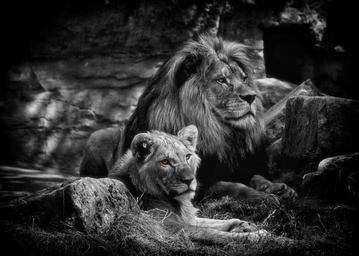Introduction
In a world driven by visual storytelling, portrait photography stands out as a powerful medium to convey emotions and personalities. From capturing the fleeting expressions of joy to the deep contemplations of solitude, portrait photography offers an intimate glimpse into the human experience. This article dives deep into The Art of Portrait Photography: Capturing Emotion and Personality, exploring techniques, styles, and the emotional depths that this art form can achieve.
Understanding Portrait Photography
What is Portrait Photography?
Portrait photography is a genre that focuses on capturing the likeness, personality, and mood of individuals or groups. Unlike candid photography, which captures spontaneous moments, portrait photography often involves some level of planning and interaction between the photographer and subject.
Why is it significant?
Portraits serve as more than just pictures; they are reflections of our lives, showcasing our journeys through various stages. Whether it's a family gathering or an individual’s self-portrait, each photograph tells a unique story.
The Evolution of Portrait Photography
From traditional paintings to modern digital captures, portrait photography has evolved significantly over time. Early portraits were often commissioned works with rigid poses and limited expression. Today, advances in technology allow for more spontaneous and creative interpretations.
Key Elements in Portrait Photography
Lighting: Natural light can add warmth while studio lights can create dramatic effects. Composition: Framing your subject is essential to highlight their personality. Background: A well-chosen backdrop can enhance or distract from the subject. Expression: Capturing genuine emotions is crucial for compelling portraits.Techniques for Capturing Emotion
Using Lighting to Evoke Mood
Natural vs Artificial Light
Natural light can offer soft shadows that flatter the subject's features while artificial lighting provides control over intensity and direction.
Example Techniques:
- Golden Hour: The hour post-sunset or pre-sunrise creates stunning warm tones. High-Key Lighting: Bright lighting creates an upbeat mood. Low-Key Lighting: Darker shadows evoke drama and mystery.
Engaging with Your Subject
Establishing rapport with your subject can lead to authentic expressions. Here are some tips:
- Ask open-ended questions to prompt conversation. Use humor to lighten the mood. Encourage movement or interaction with props.
Exploring Different Styles in Portrait Photography
Traditional Portraits
Traditional portraits often involve posed subjects with classic attire against simple backgrounds. These shots focus on clarity and detail, emphasizing facial features.
Candid Portraits
Candid portraits capture genuine moments without posing, reflecting real emotions in everyday scenarios.
Environmental Portraits
These portraits place subjects in their natural surroundings—be it at work or home—to tell more about their story through context.
Creative Approaches: Faceless Self-Portrait Ideas
Defining Faceless Self-Portraits
Faceless self-portraits focus on elements other than facial features—hands, silhouettes, or symbolic objects—inviting viewers to interpret identity differently.
Why choose faceless self-portraits?
They provide anonymity while still conveying emotion—an introspective journey for both photographer and viewer.
Ideas for Faceless Self-Portraits:
Capture shadows against textured surfaces. Use props like hats or scarves to obscure your face creatively. Experiment with angles focusing on hands interacting with objects.Aesthetic Colorful Portrait Photography Techniques
Understanding Color Theory in Portraits
Color theory plays a vital role in creating visually striking images that evoke feelings:
- Warm colors (reds/oranges) stimulate energy. Cool colors (blues/greens) promote calmness.
Practical Applications:
- Incorporate complementary colors in clothing against contrasting backgrounds. Use colored gels on lights for artistic effects.
Creating Aesthetic Colorful Pictures
Aesthetic colorful portrait photography http://thinkersparadise261.huicopper.com/fine-art-photography-elevate-your-home-with-unique-visuals involves harmonizing vibrant hues within your composition:
Choose color palettes carefully based on emotion you wish to convey. Use props or backgrounds that enhance rather than detract from your subject’s colors. Take advantage of editing software to boost vibrancy without losing authenticity.Fine Art Photography as a Genre in Portraiture
What is Fine Art Photography?
Fine art photography transcends commercial purposes; it's about expressing ideas through artistic vision—often provoking thought or conveying deep meaning.

Combining Fine Art with Portraiture:
Utilizing techniques like surrealism or abstraction transforms standard portraits into captivating narratives that challenge perceptions of identity and emotion.
How to Hang Large Canvas Prints from Your Portrait Sessions
1. Select Your Wall Space Wisely
Choose an area that complements the artwork’s scale and color scheme while avoiding cluttered backgrounds that might detract from its impact.
2. Measure & Mark
Use measuring tape for precise placement:

- Center the canvas at eye level (around 57 inches from floor). Mark where screws will go using a pencil for easy reference during installation.
3. Use Quality Hardware
Invest in sturdy hooks designed for weight-bearing capacity suitable for large canvases—ensuring safety and stability once hung on walls!
FAQs about Portrait Photography
1. What makes a good portrait?
A good portrait captures not only physical likeness but also conveys emotional depth—creating a connection between viewer and subject through expression, lighting, and composition choices.
2. How do I prepare my subject before a shoot?
Communicate openly with them ahead of time! Discuss styling options (clothing choices), potential poses they find comfortable—or simply encourage them to be themselves during the session!
3. Is it necessary to have professional equipment?
While high-quality gear enhances image quality significantly; many successful portraits are taken using smartphones nowadays! Focus primarily on lighting & composition rather than just camera specs alone!
4. What editing software is best for portrait retouching?
Adobe Lightroom & Photoshop remain industry standards; however alternatives like Capture One offer robust tools tailored specifically towards fine art photographers looking for advanced features too!
5. Can anyone learn portrait photography?
Absolutely! With practice comes mastery—a willingness to experiment will help refine skills regardless if you're just starting out or aiming toward becoming an art photographer professionally!
6. What are some common mistakes beginners make?
Overthinking poses can lead subjects feeling stiff/uncomfortable instead focus should remain on keeping things natural & encouraging spontaneity throughout sessions!
Conclusion
The world of portrait photography is vast and rich with opportunities for creativity, expression, and connection—allowing photographers like you to capture not just faces but emotions woven into stories behind every smile or frown encountered along life’s journey! Through understanding techniques such as lighting nuances coupled alongside innovative approaches like faceless self portraits; one can elevate their artistry translating simple snapshots into breathtaking visual narratives evoking profound responses from audiences everywhere!
So grab your camera gear today—it’s time you start crafting those aesthetic photo walls filled with stunning masterpieces showcasing remarkable personalities waiting patiently behind each frame captured forevermore!